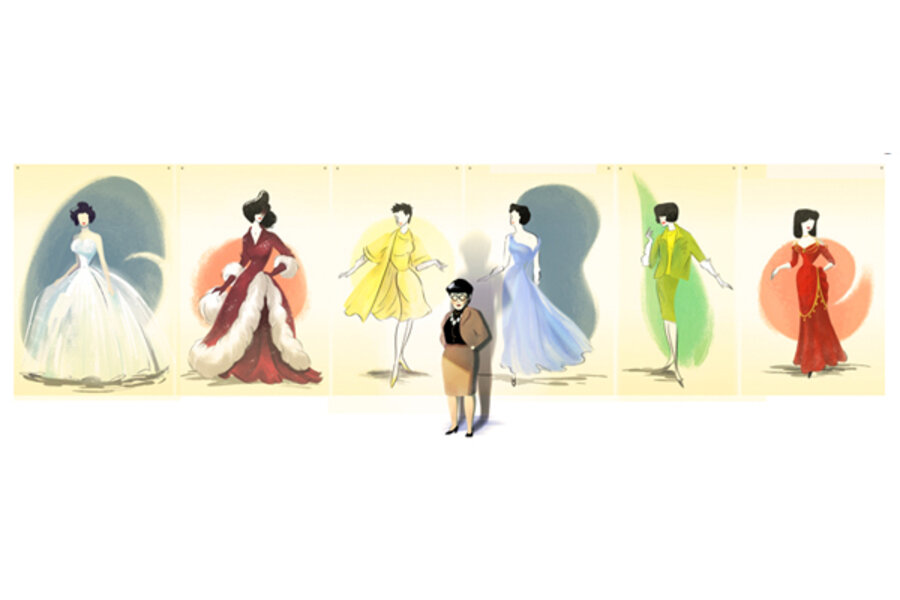Edith Head: Google Doodle honors Hollywood legend
Loading...
Anyone who has taken fashion inspiration from Audrey Hepburn, Natalie Wood, or Elizabeth Taylor’s on-screen style may actually have Edith Head to thank.
The 20th century costume designer created the iconic wardrobes of movies ranging from Hepburn’s “Sabrina” to Alfred Hitchcock’s “The Birds” over a half-century long career that earned her critical acclaim as well as a hand in designing a page in fashion history books. Several of her most famous designs, as well as her austere personal style, are captured online today through a Google Doodle in honor of the 116th anniversary of her birth.
Born Edith Claire Posener in San Bernardino, Calif. on Oct. 28, 1897, Ms. Head originally hoped to be a French teacher. She studied French at the University of California-Berkeley, gained a master’s degree in romance languages from Stanford, and got her first job as a French teacher at a girl’s school in San Diego. She later picked up drawing in hopes of making a bit of extra cash as an art teacher, but instead it led to her first job in Hollywood: a costume sketch artist for Paramount Pictures in 1924.
Around this time, she also married Charles Head, and though they later divorced, the last name “Head” stuck in her professional life.
Though Head later admitted she used a student’s sketches to land her the job at Paramount, her talent quickly proved her worth. Head stayed at Paramount for 43 years (then Universal Pictures after 1967) and became the stylish eye behind Hepburn’s European ensembles in “Roman Holiday,” the floral sarong worn by Dorothy Lamour in “Jungle Princess”, and Elizabeth Taylor’s sparkling strapless dress in “A Place in the Sun,” among more than 400 other movie wardrobes.
She was known to consult with her female actresses, making her a favorite among the Hollywood stars she dressed, who ranged from Mae West to Grace Kelly to Natalie Wood over her long-lasting career. Plus she captured the heart of directors such as Alfred Hitchcock, as she dressed his leading ladies in tailored, fashionable ensembles that ironically stayed together as his characters fell apart during his many on-screen psychological thrillers.
But her fame wasn’t limited to creating some of the most memorable looks in cinematic history. Over her career, she was nominated for 35 Oscars and won eight, the most of any woman in Academy Award history. She is also the only costume designer to have a star on the Hollywood Walk of Fame.
Despite making a living dressing others, her personal style also lent her a bit of notoriety in Tinsel Town. She favored pulled back dark hair with short blunt bangs, and was never without her thick, black-rimmed round glasses. Though not confirmed, her unique style and no-nonsense personality is thought to be the inspiration for the character Edna Mode in Pixar’s movie “The Incredibles.”
Head died in 1981 at the age of 83, but today gets new life on Google.








